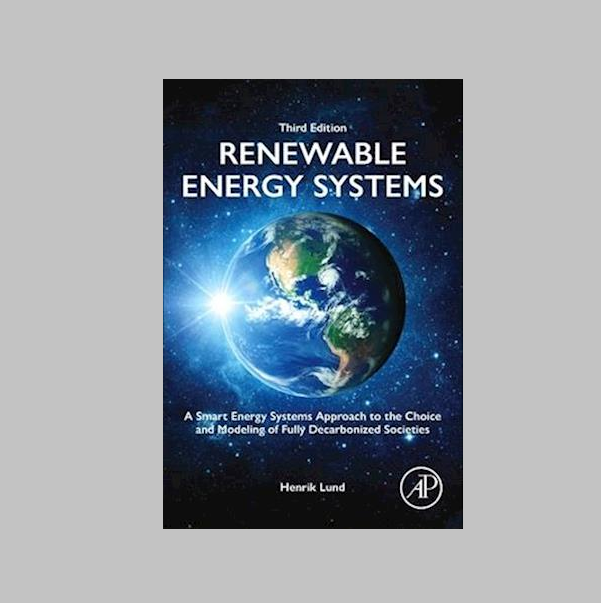Case Studies
Below, you will find a filter. Select one of the categories to view the studies which have been completed with EnergyPLAN under this category. Many of the studies relate to more than one category.
Important Note: After you select a category, a short list will appear. Therefore, you may need to select ‘Older posts’ at the bottom of the list to view more of the studies in that category.
The effectiveness of storage and relocation options in renewable energy systems
100% Renewable Energy
Storage Solutions
Authors:
Morten Boje Blarke, Henrik Lund
Link to the Journal Paper Across the world, energy planners and transmission system operators are faced with decisions on how to deal with challenges associated with high penetration levels of intermittent energy resources and combined heat and power (CHP). At the same time, distributed plant operators are eager to reduce uncertainties related to fuel and electricity price fluctuations. These...
Integration of renewable energy into the transport and electricity sectors through V2G (2008)
Authors:
Henrik Lund, Willett Kempton
Link to the Journal Paper Large-scale sustainable energy systems will be necessary for substantial reduction of CO2. However, large-scale implementation faces two major problems: (1) we must replace oil in the transportation sector, and (2) since today’s inexpensive and abundant renewable energy resources have fluctuating output, to increase the fraction of electricity from them, we must learn to maintain...
Large-scale integration of wind power into different energy systems (2005)
Denmark
CHP
Heat Pumps
Wind Energy
The paper presents the ability of different energy systems and regulation strategies to integrate wind power. The ability is expressed by the following three factors: the degree of electricity excess production caused by fluctuations in wind and Combined Heat and Power (CHP) heat demands, the ability to utilise wind power to reduce CO2 emission in the system, and the ability to benefit from...
A 100% Renewable Energy Strategy for Denmark (2007)
Denmark
100% Renewable Energy
This paper discusses the perspective of renewable energy (wind, solar, wave and biomass) in the making of strategies for a sustainable development. Such strategies typically involve three major technological changes: energy savings on the demand side, efficiency improvements in the energy production, and replacement of fossil fuels by various sources of renewable energy. Consequently, large-scale renewable energy implementation plans must include strategies...
Large-scale integration of optimal combinations of PV, wind and wave power into the electricity supply (2006)
Denmark
Photovoltaics
Wave Energy
Wind Energy
This article presents the results of analyses of large-scale integration of wind power, photo voltaic (PV) and wave power into a Danish reference energy system. The possibility of integrating Renewable Energy Sources (RES) into the electricity supply is expressed in terms of the ability to avoid excess electricity production. The different sources are analysed in the range of an electricity production from...
Integrated transportation and energy sector CO2 emission control strategies
Authors:
Henrik Lund, Ebbe Münster
This paper analyses the mutual benefits of integrating strategies for future energy and transport CO2emissions control. The paper illustrates and quantifies the mutual benefits of integrating the transport and the energy sector in the case of Denmark. Today this issue is very relevant in Denmark due to the high share of fluctuating renewable energy produced in the country. In the future, such...
Electric grid stability and the design of sustainable energy systems (2005)
Link to the Journal Paper Today, in most countries, electricity is produced either on hydropower or on large steam turbines on the basis of fossil fuels or nuclear power. Electricity from distributed generation constitutes only small amounts. Until now, the task of balancing supply and demand and the task of securing frequency and voltage on the grid has been...
Management of surplus electricity-production from a fluctuating renewable-energy source (2003)
Authors:
Henrik Lund, Ebbe Münster
Link to the Journal Paper Renewable-energy sources and energy efficiency are important elements in Danish Energy Policy. The implementation of wind power and combined heat- and power production (CHP) have already led to substantial fuel savings, and both technologies are intended for further expansion in the coming decade. Today, approximately 50% of both Danish electricity and heat demand are...
CEESA: 100% Renewable Energy Scenarios for Denmark to 2050 (2012)
Denmark
100% Renewable Energy
Visit the CEESA Homepage The CEESA project (Coherent Energy and Environmental System Analysis) presents technical scenarios as well as implementation policies and a road map of Denmark’s transition from a fossil fuel-dominated energy system to a supply system based completely on renewable energy with a dominating part of intermittent sources like wind and solar power. Energy conservation and a...
